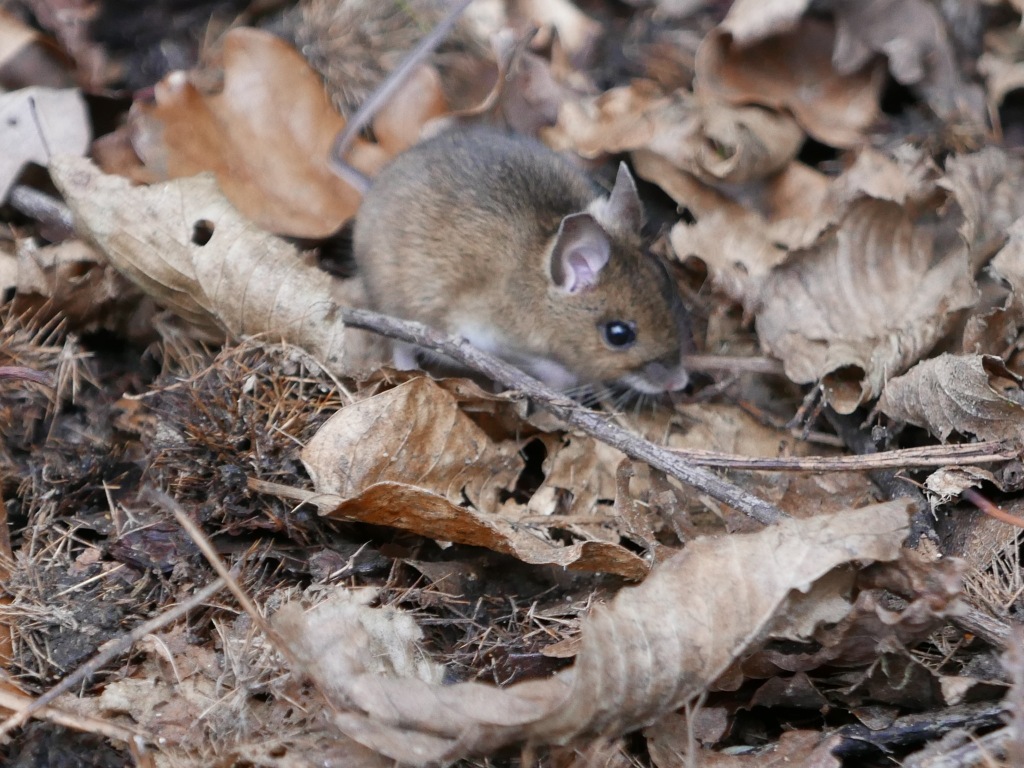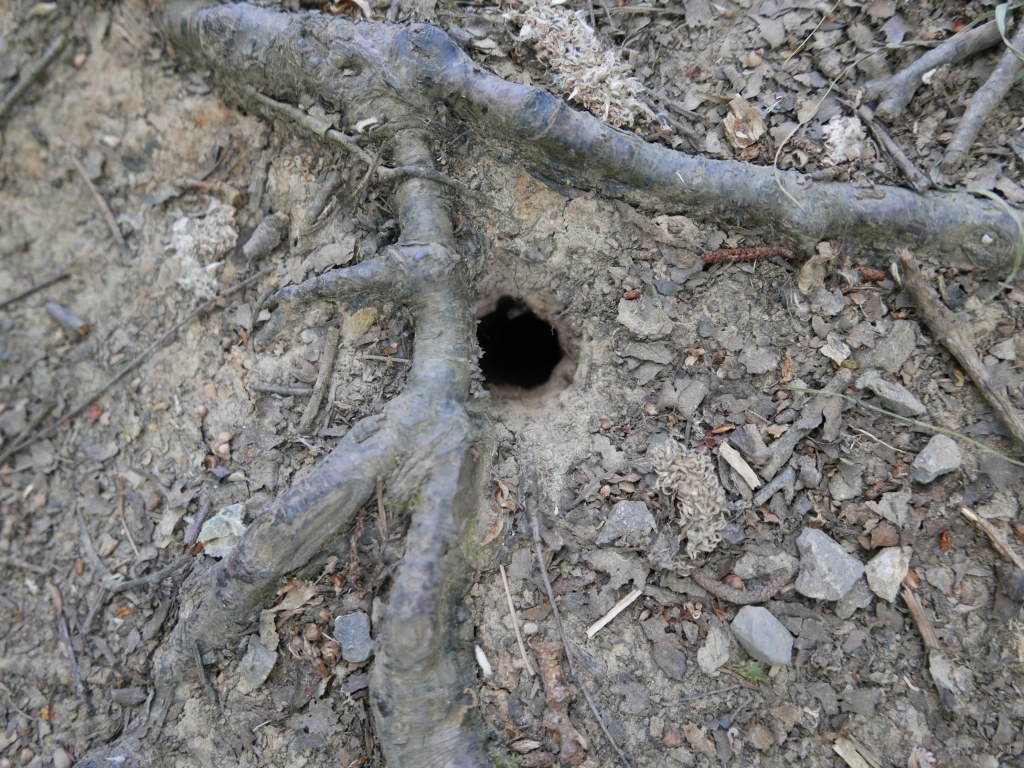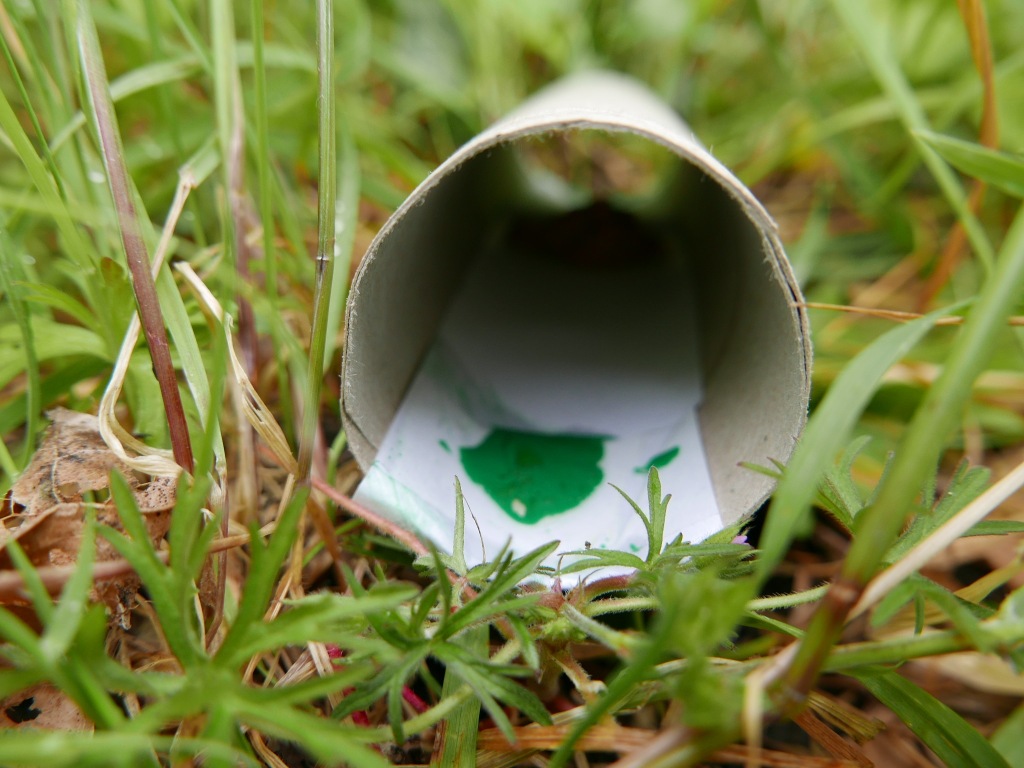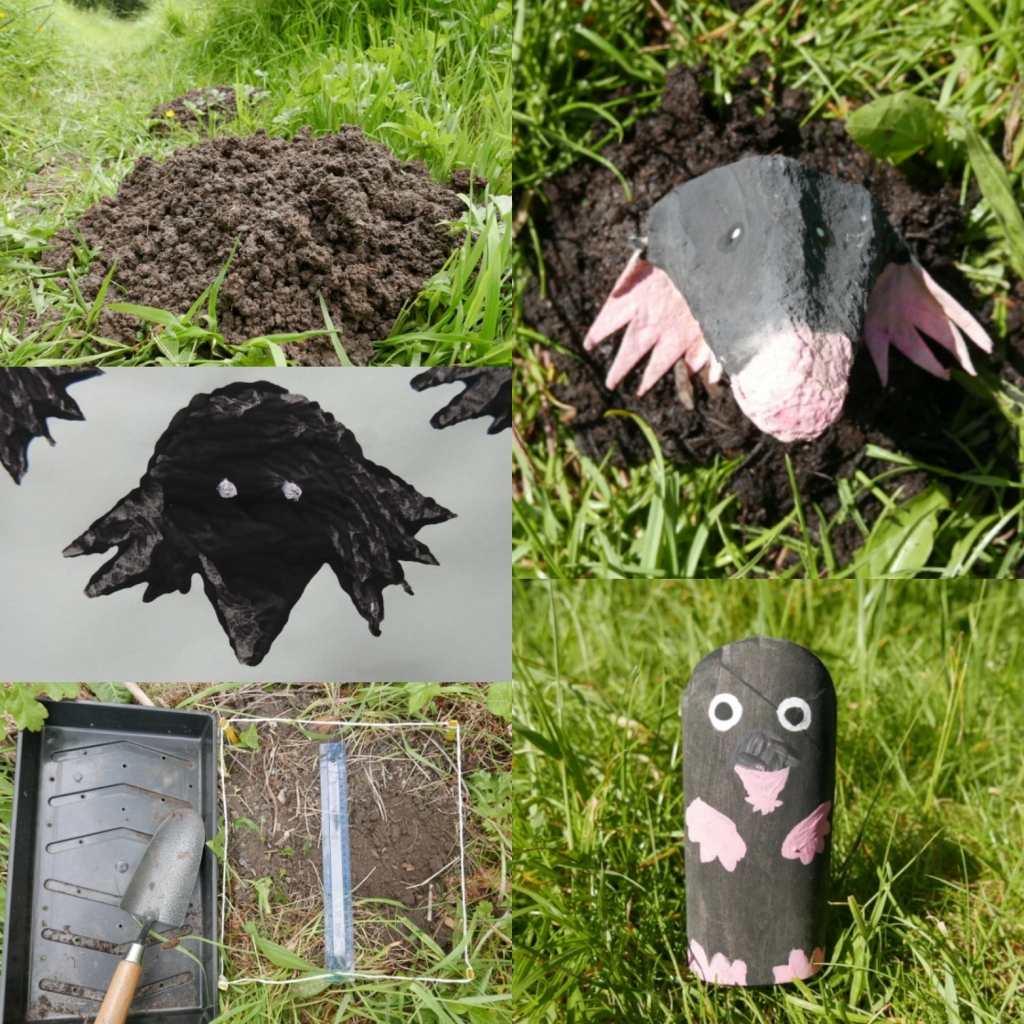Mice, voles and shrews are all small mammals that play an important role in the environment, providing a vital source of food for a wide variety of other wildlife including, owls, kestrels, weasels, stoats, foxes and badgers, as well as controlling populations of pest insects, dispersing seed, returning nutrients to the soil and decomposing and mineralising decaying plant material.

There are six species of mouse in the UK the House mouse, Wood mouse, Field mouse, Harvest Mouse, Yellow-necked mouse and Dormouse. Mice have large dark eyes, long tails, large pointed ears and pointed noses, most UK species of mouse also have brown or grey fur like the wood mouse pictured above. They are part of the rodent family and like all rodents they have two long, teeth at the front of their mouths called incisors, which they use to gnaw food, dig burrows and defend themselves with. Mice are omnivores which means they eat a varied diet that includes nuts, seeds, berries, fruit, roots, shoots, leaves, fungi and invertebrates.
Harvest mice are the only British mammals to have a prehensile tail which they use for climbing grass stems and vegetation. They build grass nests throughout the year and are mostly nocturnal although they can be active in the day during the warmer summer months.

Voles and shrews are both smaller than mice, with shorter tails and smaller eyes and ears. Voles (pictured above) are part of the rodent family but have much shorter, rounded snub noses than mice. There are three species of vole in the UK the Bank vole, Field vole and Water vole. Bank and Water voles are both omnivores and eat a similar to diet to mice, Field voles however are mainly herbivores and mostly eats seeds, roots and leaves although they have been known to eat bark and the occasional insect larvae in the leaner winter months.

There are three species of shrew (pictured above) in the UK the Common shrew, the Pygmy shrew and water shrew. Shrews have much longer and pointed noses than both mice and voles and they aren’t part of the rodent family as they have sharp spike like teeth, shrews are actually more closely related to moles than they are mice. Like moles shrews have poor eyesight so they use their long super sensitive whiskers to help them navigate and locate food. Shrews also have venomous saliva like moles which they use to paralyse their prey with so they can take it back to their burrow to store alive as a source of food for later. Shrews are omnivorous so they eat seeds and nuts as well as invertebrates like insects and worms.

The lifespans of mice, voles and shrews are all very short lived with shrews only living up to 12 months, voles living up to 16 months and mice living up to 24 months. They are also preyed upon by a large number of other animals, so in order to to survive as a species they have all evolved to be prolific breeders, producing several litters of several babies each year. Mice, vole and shrew babies are all born blind, pink and hairless in nests that are often lined with dried grass or other soft materials like leaves, moss or in the case of house mice chewed up scraps of paper or fabric.
You can find lots of fun, educational activity ideas below to help you learn more about these amazing animals, from arts and crafts to science and sensory.
1. Take part in a mammal survey
Did you know that you can find over 100 mammal species on land and in the waters around the UK? Mammals are warm blooded animals that have back bones, mammary glands and fur or hair. Wildlife and mammal surveys are quick and easy to do for all ages and you don’t need anything other than observant eyes and an outdoors space to explore and survey. You can often spot signs of mammal activity if you know what to look for. The further activities below give you lots easy ways and guidance on how to find and identify mammal signs, tracks and homes.

If you want you could take a notepad or camera with you to record your finds or print out photos or guides to identifying mammal signs and tracks. You can then record your mammal sightings on national databases like Nature’s Calendar or iRecord or submit findings to your own local wildlife, environmental science or natural history groups. You can also take part in national surveys like the Peoples Trust for Endangered Species Living with Mammals Survey or their Mammals on the Road Survey here.
2. Spot mouse, vole and shrew holes and nests
Mice, voles and shews are all burrowing animals that can dig tunnels and burrows into the earth. You can often spot the tell tale entrance holes dug into the earth, amongst tree roots, grass, sand or in the banks of rivers and streams. This is also a good place to look for tracks and and any remains of food or stray bits of fur caught on bushes, roots or branches near or around the entrances. Small mammals may leave nibbled and cracked nut shells and half eaten fruit or food near their burrows.

3. Become a nut shell detective
You can often find nut shells on woodland walks during the autumn and winter. If you look closely at them you can play detective and try to work out what animal has eaten the nut. If the nut has been split neatly in half then it is most likely to have been eaten by a squirrel. If there is a hole in the shell that is ragged and has tooth marks across the surface and edges of the nut then it was mostly eaten by a wood mouse, if the hole is smooth round and has tooth marks on the inside of the hole but not the surface of the nut then it was most likely eaten by a dormouse or a bank vole. If the nut is broken into pieces or jammed into a tree crevice then it was most likely eaten by a bird like a woodpecker or a nut hatch.

4. Look for paw prints
You can often find animal pawprints in muddy areas or after fresh snow. The best places to look are in areas right by water like rivers, lakes, ponds and streams where animals go to drink and walk through soft mud. The Wildlife Trust have a useful photo guide to identifying animal tracks here which you can use to help identify any prints you might find.

5. Make a paw print plaster casts and clay impressions
You can easily take a cast of any animal prints you find to enjoy and explore at home. All you need for this activity is some Plaster of Paris, water, a cup or mixing bowl and a spoon. Simply mix the plaster with water in the cup or bowl and then pour it onto the animal print. You could also make a simply cardboard collar or hoop to place over the print and contain the plaster but this isn’t essential. You then need to wait patiently for 30 minutes to an hour for the plaster to dry before carefully removing the cast of the print. You can then use your plaster cast paw prints as stampers to make impressions and prints into clay, salt dough or playdough. Once your prints have dried you can paint and decorate them or turn them into pendants or decorations.

6. Make a small mammal foot print tracker
It is simple and easy to turn an old kitchen roll tube into a small animal print tracker. All you need is paper, 3 bits of sticky tape, non toxic paint, cooking oil and some peanut butter. First cut the paper into a strip so that its the same length and width as the kitchen roll tube. Next place a strip of tape at each end of the paper and a piece in the middle.

Next place a blob of peanut butter on the middle strip as bait to tempt the small mammal into the tube. Next mix some non toxic paint with cooking oil and paint the two tape strips. The cooking oil will stop the paint drying out too quickly. Now carefully place the paper strip in the kitchen roll tube and find a safe place to hide it outside.

You want to put it on the ground in a sheltered place like a bush so it doesn’t blow around, you could use stones on either side to hold it in place. Leave your mammal tracker out overnight and check on it first thing in the morning. When a small animal walks through the tube they will tread in the paint and track foot prints across the paper strip. Make sure to wash your hands thoroughly with antibacterial wash after handling a used small mammal tracker and dispose of both the tracker and paper carefully.
7. Make a sand print tracker
To make a sand print tracker you simply need to lay a thin layer of damp sand across a flat surface like a path or patio. Smooth the surface of the sand and leave overnight. In the morning you can check to see if any animals have left tracks in the sand. The only downside to sand print trackers is that some wildlife (like cats) may mistake it for a litter tray. So just be aware of that if you decide to make one. Again the Wildlife Trust have a useful photo guide to identifying animal tracks here which you can use to help identify any prints you might find.

8. Go on a poo hunt
A slightly gross but also surprisingly easy way to track mammals is via their poo*. Many species leave very distinctive droppings that you can identify using the Wildlife Trusts handy photo guide here. Once you feel confident identifying droppings you can also have a little fun trying their Poo Dunnit quiz here.
*Please don’t touch or handle poo or droppings as they can harbour pathogens like bacteria and viruses. It’s best to observe them safely by telling children not to touch them or get too close.

9. Look for and dissect owl pellets
Owl pellets are the undigestible remains of an owl’s meal that have been regurgitated as a pellet. Owls swallow their prey whole or tear off large pieces to wolf down, however they can’t digest hair, feathers, bones and skulls so they throw these up as compressed grey pellet like lumps of fur, hair, teeth and bone. Mice, voles and shrews make up a large part of an owls diet so you are more than likely to find their fur, bones, teeth and even skulls in an owl pellet.

Please don’t touch or handle owl pellets unless you have proper gloves and know what you are doing. Animal remains can harbour pathogens like bacteria and viruses. It’s best to observe them safely by telling children not to touch them or get too close. You can dissect an owl pellet on the ground where you found it by using gloves and two sticks or tweezers, carefully prize apart the pellet (using the sticks or tweezers) and then examine the contents. You could take a photo or use a magnifying glass to look more closely. Don’t forget to thoroughly wash and disinfect your hands and tools afterwards.

10. Egg carton mice, voles and shrews
We hate to waste anything and recycling and reusing materials is one of many small things we can all do to help the environment. So instead of chucking used egg cartons we like to find ways to use them in crafts and activities. To make egg carton mice, voles or shrew you just need an old egg carton, and paint or pens. First cut round one of the bottom spikes and the two egg carton cups from the egg carton to form the nose and ears. Don’t forget to make the ears shorter and more pointy for voles and shrews. You can then add colour to your egg carton mouse, vole or shrew using paint, pens or collaged materials.

11. Cardboard tube mice, voles and shrew
To make cardboard tube mice, voles and shrews you just need an old cardboard tube and paint or pens. First cut into one of end of the tube to form two ear shapes (Don’t forget to make the ears shorter and more pointy for voles and shrews), then paint, colour or collage onto the tube to add details like eyes, mouths and paws. You can then use them as a decorations, story props, napkin rings or even fill them with sweets or presents to give as gifts.

12. Potato print mice, voles and shrew
Potato and vegetable printing is a simple activity for children of ages, all you need is a potato cut in half, a bit of inspiration and some paint to get started. How about using the prints to make patterns, pictures, cards and even recyclable wrapping paper. It is also fun to experiment printing on different types of surfaces and textures from paper to fabric, foil and wood. And as long as you use non toxic paint you can even print on outdoor surfaces like paths, trees and leaves. You can easily make mice, vole and shrew potato prints by cutting a potato in half and then cutting it into a simple mice, vole and shrew head or body shape. You can then dip the potato half in paint and have fun printing it onto different surfaces before adding on any extra details like the eyes with pen or paint.

13. Ice mice, voles and shrews
Mice, vole and shrew ice blocks are also really simple to make, you just need some small old plastic pots (yogurt pots are perfect for this), next fill them with water and then freeze them overnight. Once you take the ice blocks out of the pots you can then add on eyes and a nose with paper and pens. Its a great activity for practising fine motor skills and developing imaginative play.

14. Make a home for wildlife
As wildlife habitats are in decline it’s more important than ever to make space for wildlife in our gardens or around our homes. One of the simplest things you can do to help small mammals is let areas of grass grow long and wild in your garden. Long grass provides shelter and food to a whole host of wildlife. Leaving piles of branches, leaves, dead wood and cut grass along the edges of the garden also provides areas of shelters for mammals and is a great way to increase the diversity of wildlife in your garden. Many insects benefit from having shelter and feeding on decaying wood and leaves and a healthy population of insects will also provide a ready source of food for other wildlife such as mice, voles, shrew, hedgehogs, frogs, toads, slow worms, bats and birds.

15. Learn about the food chain
You can learn about the role small mammals play in food chain by drawing a simple food pyramid. Food pyramids start with the primary producers at the bottom, they tend to be photosynthetic organisms like plants, trees and grasses. Next come the primary consumers, the animals that feed on the primary producers for example mice, voles, shrews, rabbits and squirrels, next come the secondary consumers or intermediate predators like snakes and weasels, and finally there are the tertiary consumers or the apex predators like badgers and foxes which are at the top of the food chain.

- For Day 13 of 30 Days Wild 2024 I enjoyed helping with a forest school session in the woods and meadow as well as looking for mouse, vole and shrew holes. We also enjoyed some arts and crafts and made a small mammal print tracker.
If you like this you might like to try:




